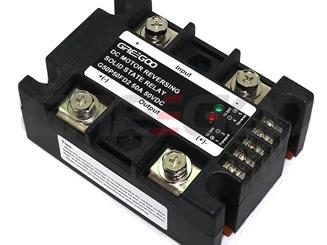How to Choose Single-Phase or Three-Phase Thyristor Power Controllers: A Comprehensive Guide to Key Factors
In the field of industrial heating control, selecting the right thyristor power controller (SCR power regulator) is crucial for optimal system performance. Single-phase and three-phase controllers each excel in specific scenarios; poor selection can lead to inefficiency, grid instability, or wasted resources. This article provides a professional yet accessible analysis of selection factors, drawing from load power, grid conditions, load characteristics, performance, and costs to guide your decision.
I. Selection Based on Load Power
Load power is the primary consideration, directly impacting capacity and stability.
-
Single-Phase thyristor power controller Applications
- Total load power typically below 10kW (current ≤50A).
- Heater rated voltage: 220V AC.
- Ideal for small-scale equipment like lab heaters, packaging machines, or mini-injection molders—low power needs with simple, efficient design.
-
Three-Phase thyristor power controller Applications
- Total load power over 10kW (current ≥50A).
- Heater rated voltage: 380V AC.
- Suited for medium-to-large equipment like extruders, large ovens, or reactors—offers higher current capacity for demanding loads.
Tip: Use P = √3 × U × I × cosφ (three-phase) or P = U × I × cosφ (single-phase); add 20% margin for peaks.
II. Selection Based on Grid Conditions
Grid compatibility affects installation ease and system reliability.
-
Single-Phase thyristor power controller Requirements
- Requires single-phase 220V AC supply.
- No phase balance needed; simple wiring (live neutral).
- Fits residential or small factory grids with low installation costs.
-
Three-Phase thyristor power controller Requirements
- Requires three-phase 380V AC supply (wye or delta).
- Demands balanced grid to avoid harmonics.
- More complex wiring (three live phases ± neutral), but superior stability for industrial use.
Tip: Check voltage fluctuation; if >±10%, opt for models with phase-loss protection.

SCR Power Controller Three Phase Wiring Diagram
III. Selection Based on Load Characteristics
Load type determines control precision and interference.
-
Loads Suited for Single-Phase Control
- Small resistive heating loads (e.g., heating tubes).
- Low symmetry needs, medium precision (±2°C).
- For basic systems using zero-cross or phase-angle control.
-
Loads Suited for Three-Phase Control
- High-power resistive or inductive loads (e.g., transformer-coupled).
- Balanced three-phase systems with high precision (±1°C).
- For precision applications like semiconductor processing.
Tip: Resistive loads: phase-angle for smooth control; inductive: zero-cross to reduce noise.
Greegoo Thyristor Voltage Regulator Solution
IV. Performance and Cost Considerations
Balance performance with budget for long-term value.
-
Single-Phase thyristor power controller Features
- Lower cost (30% savings on equipment install).
- Easy maintenance, compact size.
- Best for budget-constrained small projects, though power-limited.
-
Three-Phase thyristor power controller Features
- Excellent phase balance, low harmonics (<5% THD).
- Higher precision with soft-start (9-120s options).
- Durable for high-power, precision needs (MTBF >100,000 hours).
Tip: Calculate heat dissipation (≈1.2 × I × V per leg); ensure proper cooling.
 |
 |
 |
V. Selection Tips and Precautions
- Power Assessment: Accurately measure load; include margin.
- Grid Check: Verify supply type and stability.
- Load Analysis: Evaluate resistive/inductive traits and precision.
- Future Expansion: Choose modular designs for scalability.
- Maintenance Ease: Prefer LED indicators and alarm outputs.
- Safety First: Select CE-certified units with overcurrent/overtemp protection.
Quality controllers typically offer:
- Smart Control: 4-20mA/0-10V inputs, PLC-compatible.
- High Precision: Advanced algorithms for stable temperature.
- Multi-Protection: Overcurrent, phase-loss, overtemperature.
- Flexible Setup: RS485 comms, multiple modes.
- Reliable Durability: Premium SCRs for fault-free operation.
Summary
Choosing single or three-phase thyristor power controllers involves weighing load power (<10kW: single-phase; >10kW: three-phase), grid conditions, load traits, performance, and costs. For complex cases, consult experts. Proper selection boosts efficiency by 20% and cuts energy use. Buy SCR voltage regulator, feel free to discuss your needs now!

The Critical Role and Application Analysis of Freewheeling Diodes in Solid-State Relay
The freewheeling diode plays a critical protective role in solid-state relays, especially when controlling inductive loads. It effectively suppresses back electromotive force, protects the power components of the solid-state relay, reduces electromagnetic interference, and enhances the stability and reliability of the circuit.
Read More
Greegoo's motor reversing solid state relays introduction
A motor reversing solid-state relay (SSR) is an electrical switching device used to control the direction of rotation of an electric motor, direction reversal, solid state technology, fast control with protection, Noiseless Operation, compact design, longer operational lifespan.
Read More
Differences Between TRIAC Output SSR (GD series SSR) and SCR Output SSR (GDH series SSR)
GD and GDH series single phase solid state relay, what's their difference?
Read More
Discover the Greegoo GB Series Fast Recovery Diodes: The Ideal Choice for High-Performance Power Electronics
Unleash the future of power electronics with the Greegoo GB Series—where performance, precision, and flexibility converge.
Read More














